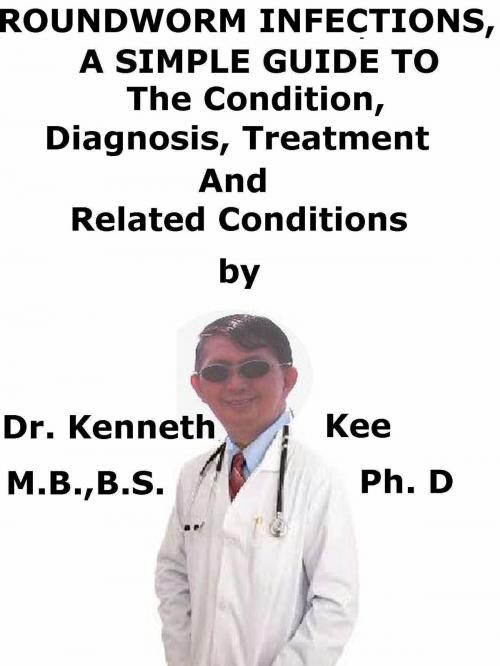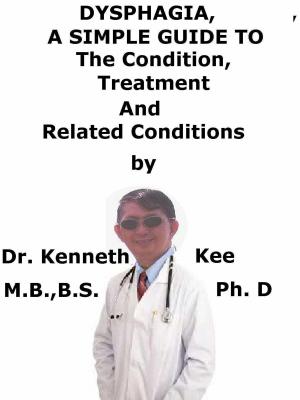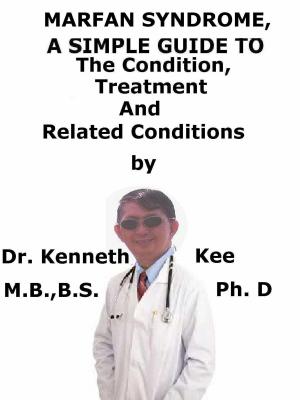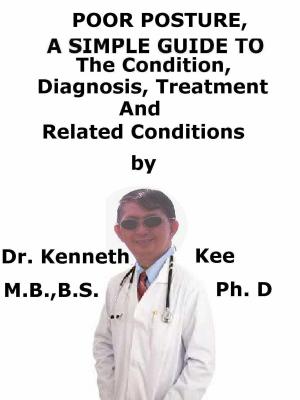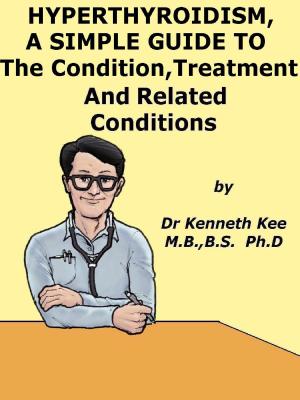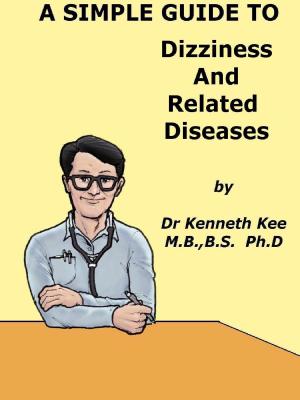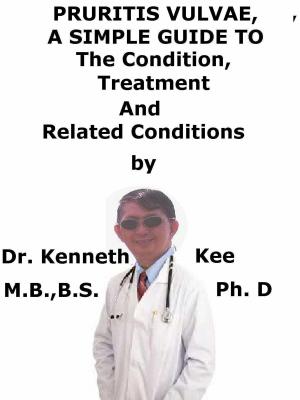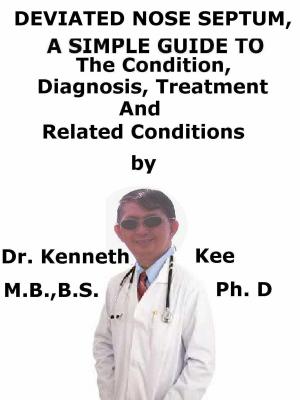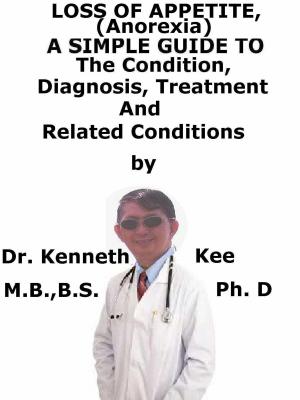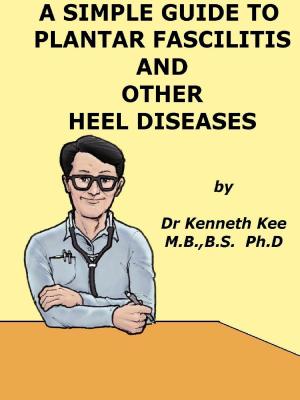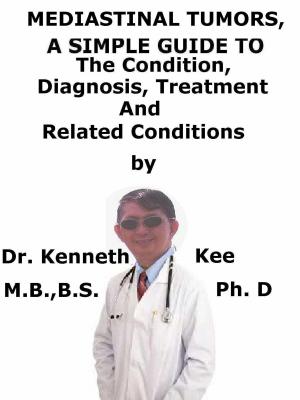Roundworm Infections, A Simple Guide To The Condition, Treatment And Related Conditions
Nonfiction, Health & Well Being, Medical, Ailments & Diseases, Infectious Diseases, Parasitology, Health, Abdominal| Author: | Kenneth Kee | ISBN: | 9781370714728 |
| Publisher: | Kenneth Kee | Publication: | October 19, 2016 |
| Imprint: | Smashwords Edition | Language: | English |
| Author: | Kenneth Kee |
| ISBN: | 9781370714728 |
| Publisher: | Kenneth Kee |
| Publication: | October 19, 2016 |
| Imprint: | Smashwords Edition |
| Language: | English |
Roundworms are parasitic worms which are found in the intestines of children and young adults in undeveloped countries.
Ascaris lumbricoides is the most common roundworm infection and affects as many as one billion people worldwide
They vary in length from several millimeters to up to two meters.
About 60 types of roundworm are parasites of humans.
They usually live in the human gut.
However some species can travel from the gut to live in different parts of the body.
It is rare in developed countries because of the modern sanitary conditions and better hygiene.
Several members of the same household may be infested at the same time so all the family should be treated together.
Roundworm eggs and larvae are present in the soil.
They most commonly get into the body when a person gets them on his or her hands and then transfers them to the mouth.
Roundworms eggs are present on the hands or food prepared by people who has roundworms infestations.
When the eggs are swallowed they developed into larvae in the intestines.
The larvae will penetrate the intestinal wall and reach the liver and lungs of the infected by way of the blood and lymphatic system. From the lungs the larvae enter the air tubes, ascend the bronchi and are swallowed eventually reaching the small intestines where they grow to maturity and mate.
The worms cling on to the mucosal lining of the intestine and absorb nutrients from the food taken into the intestines by the affected person.
The main symptoms of Roundworms are
1. Digestive problems
2. Abdominal pain
3. Vomiting
4. Restlessness and disturbed sleep
5. Cough during the passage through the air tubes.
The larvae in the lungs can sometimes cause symptoms such as wheeze, cough, and other chest problems.
Doctors generally diagnose Roundworms based on stool examination and culture.
Treatment of Roundworm infestation is by the use of anti-parasitic medicine:
1. Mebendazole 100mg
Mebendazole is the usual medicine used for children aged over one year, and for adults who are not pregnant or breast-feeding.
It comes as a tablet or drink. A dose is taken twice a day for three days.
2. Piperazine is an alternative.
This comes in a sachet and is added to a drink.
A single large dose is taken.
Children from three months onwards can be given piperazine to take but it should not be taken by anyone who has epilepsy or liver disease.
3. Zentel or Abendazole 400mg in a single dose
4. Pyrantel pamoate 10mg/kg in a single dose
All the family members should also be treated.
Control of roundworm infections is based on treatment with medication, improved sanitation and health education.
TABLE OF CONTENT
Introduction
Chapter 1 Roundworms
Chapter 2 Interesting Facts of Roundworms
Chapter 3 Treatment of Roundworms
Chapter 4 Threadworms
Chapter 5 Tapeworms
Chapter 6 Schistosomiasis
Chapter 7 Amoebiasis
Epilogue
Roundworms are parasitic worms which are found in the intestines of children and young adults in undeveloped countries.
Ascaris lumbricoides is the most common roundworm infection and affects as many as one billion people worldwide
They vary in length from several millimeters to up to two meters.
About 60 types of roundworm are parasites of humans.
They usually live in the human gut.
However some species can travel from the gut to live in different parts of the body.
It is rare in developed countries because of the modern sanitary conditions and better hygiene.
Several members of the same household may be infested at the same time so all the family should be treated together.
Roundworm eggs and larvae are present in the soil.
They most commonly get into the body when a person gets them on his or her hands and then transfers them to the mouth.
Roundworms eggs are present on the hands or food prepared by people who has roundworms infestations.
When the eggs are swallowed they developed into larvae in the intestines.
The larvae will penetrate the intestinal wall and reach the liver and lungs of the infected by way of the blood and lymphatic system. From the lungs the larvae enter the air tubes, ascend the bronchi and are swallowed eventually reaching the small intestines where they grow to maturity and mate.
The worms cling on to the mucosal lining of the intestine and absorb nutrients from the food taken into the intestines by the affected person.
The main symptoms of Roundworms are
1. Digestive problems
2. Abdominal pain
3. Vomiting
4. Restlessness and disturbed sleep
5. Cough during the passage through the air tubes.
The larvae in the lungs can sometimes cause symptoms such as wheeze, cough, and other chest problems.
Doctors generally diagnose Roundworms based on stool examination and culture.
Treatment of Roundworm infestation is by the use of anti-parasitic medicine:
1. Mebendazole 100mg
Mebendazole is the usual medicine used for children aged over one year, and for adults who are not pregnant or breast-feeding.
It comes as a tablet or drink. A dose is taken twice a day for three days.
2. Piperazine is an alternative.
This comes in a sachet and is added to a drink.
A single large dose is taken.
Children from three months onwards can be given piperazine to take but it should not be taken by anyone who has epilepsy or liver disease.
3. Zentel or Abendazole 400mg in a single dose
4. Pyrantel pamoate 10mg/kg in a single dose
All the family members should also be treated.
Control of roundworm infections is based on treatment with medication, improved sanitation and health education.
TABLE OF CONTENT
Introduction
Chapter 1 Roundworms
Chapter 2 Interesting Facts of Roundworms
Chapter 3 Treatment of Roundworms
Chapter 4 Threadworms
Chapter 5 Tapeworms
Chapter 6 Schistosomiasis
Chapter 7 Amoebiasis
Epilogue
